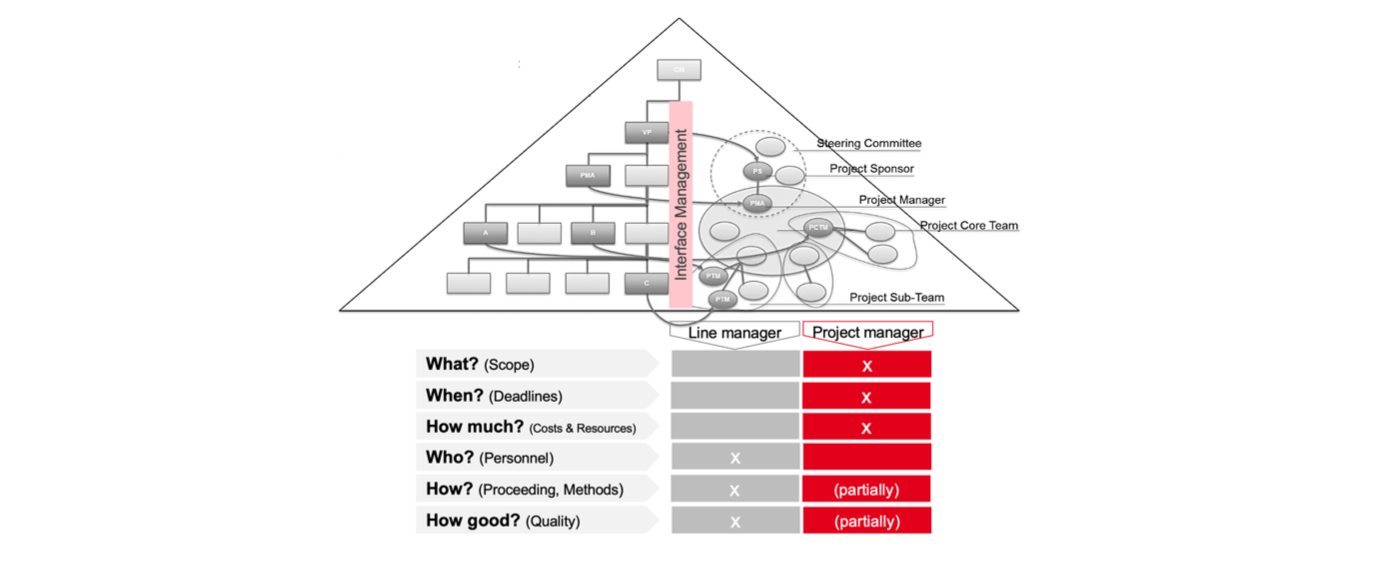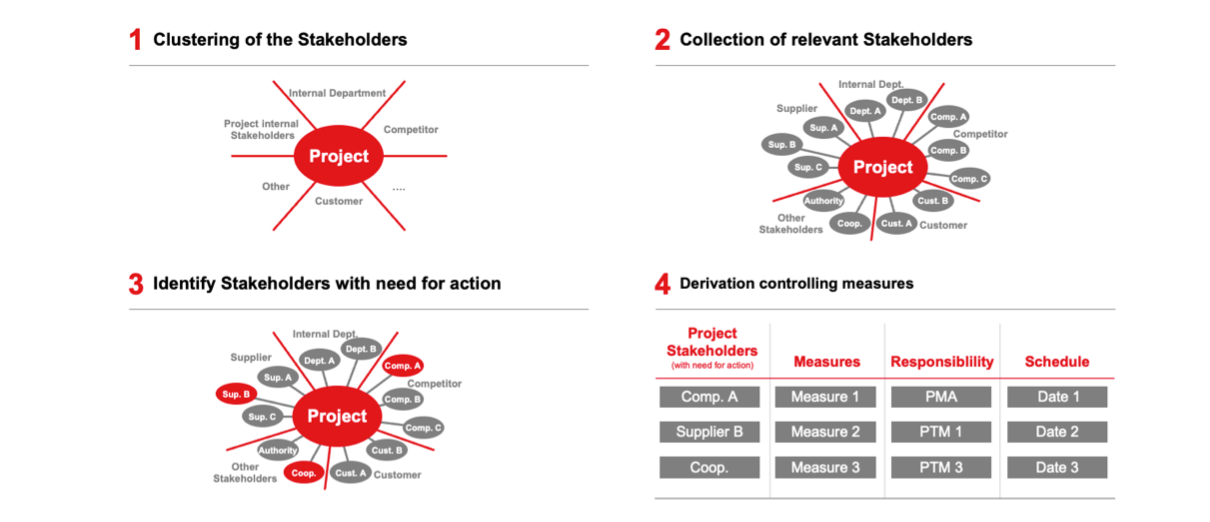Major projects are more than just large projects. While projects are already characterized by their high complexity, this complexity reaches a new dimension in major projects. If we take a closer look at the complexity of projects, we can differentiate between a
- social complexity (e.g., size of the project organization, number of stakeholders) and
- technical complexity (e.g., number of work packages, processes, technologies).
If these two factors are particularly dominant, one speaks of major projects whose management represents a unique challenge.
Thesis 1: Major projects often fail due to social complexity
Particularly in technology-savvy organizations, the focus is often on managing technical complexity. In major projects, however, social complexity must be considered. Topics such as leadership, team development, communication, or stakeholder management are of central importance, which is also evident in the complexity of the project organization of major projects.
Learn how to define project stakeholders and conduct a stakeholder analysis in our stakeholder management article.
 Figure 1: Project organizations of projects versus major projects (© PMCC Consulting GmbH)
Figure 1: Project organizations of projects versus major projects (© PMCC Consulting GmbH)
Thesis 2: Understanding Roles and Responsibilities Creates Clarity
Due to the complexity of major projects, tasks that would otherwise be the project manager's responsibility, are often performed by different people. Thus, it is not uncommon to find additional roles such as project assistant, project controller, or sub-project manager in addition to many project team members. Clarifying these roles in terms of tasks and competencies and the mutual expectations in distinction to the other project roles creates clarity.
Thesis 3: As Social Complexity Increases, the Requirements and Competencies for the Respective Role Change
Every project manager is also a project leader. In less complex projects, project management tasks tend to be limited to planning, documentation, and reporting; in major projects, the topic of leading (sub-)team members becomes much more critical. Therefore, the choice of the team members is crucial: All persons who bear leadership responsibility in major projects should also consciously exercise this responsibility and have the corresponding competencies. Or, as Peter Drucker already put it: "Management is doing things right; leadership is doing the right things."
Thesis 4: Investing in Team Development Pays Off
In a major project, there are several teams, so in addition to a core team, there are usually also (e.g., technical) sub-teams. Do not forget here that the establishment of a respective team culture is an essential object of consideration in addition to the structural definition of the individual teams. Team development is not an automatism, but a process that, according to Bruce Tuckman, takes place in four successive development steps (Forming, Storming, Norming, Performing).
Actively shaping this process and defining values, norms, and rules of the game is the task of the respective leader in the team. A certainly worthwhile effort!
Thesis 5: Communication Is the Key to an Integrative View
As in any organization, major projects also require a division of work, i.e., a distribution of responsibilities for work packages and/or subsystems. While each responsible person focuses on a single work package, the overall project view is often missing. Ensuring this in major projects is the task of periodic communication structures. In particular, you should consider the following factors when setting up periodic communication structures in major projects:
- Pay attention to so-called "horizontal" and "vertical" communication structures.
- Participants, frequency, duration, content, etc., should not only be defined within a communication structure but should also be coordinated among them.
- Use agile formats in the team, such as stand-up meetings or retrospectives, according to the principle: "We value individuals and interactions more than processes and tools."
Thesis 6: Line and Project Are Not Contradictory but Complementary
People often talk about "line organization versus project organization." However, the two organizational forms are not a contradiction but a complement to achieve customer satisfaction. The project organization is responsible for the scope of work, deadlines, and costs. In contrast, the line organization is accountable for allocating resources and the selected procedures, methods, and technical approvals.
 Figure 2: Line organization and project organization are not a contradiction (© PMCC Consulting GmbH)
Figure 2: Line organization and project organization are not a contradiction (© PMCC Consulting GmbH)
Thesis 7: The Less Stability in the Process, the Higher the Effort in Coordinating the Project
In major projects the execution of work packages requires functioning business processes such as production, product development, or assembly processes. Experience shows that inadequate business processes lead to increased project management efforts in terms of necessary coordination activities. The continuous improvement of these processes is not the task of the project organization but the respective process organizations.
Thesis 8: Managing Stakeholder Relationships Is a Project Management Task
Major projects interact with many internal and external stakeholders, i.e., people who have an interest in the project or are affected by the project in some way. Every person involved has demands and expectations that must be taken into account promptly in terms of stakeholder management - which is essential.
The stakeholder analysis allows you to keep an eye on your stakeholders, plan appropriate actions and thus ensure a sustainable and positive relationship with them.
 Figure 3: Stakeholder management in projects (© PMCC Consulting GmbH)
Figure 3: Stakeholder management in projects (© PMCC Consulting GmbH)
Thesis 9: Risk Management Is Project Management for Adults
The saying "Risk management is project management for adults" comes from Tom DeMarco. What is meant is that major projects, as already mentioned at the beginning, are risky per se due to their social and technical complexity; establishing professional risk management accordingly is a must.
Learn more about risk management and stakeholder analysis with Planforge's PPM software.
Thesis 10: Adequate Project Controlling Enables Transparency and Timely Countermeasures
Project management does not guarantee that the project goals will be achieved on time and within budget. However, professional project management ensures that deviations of any kind are detected early on and counteracted accordingly. Project controlling includes precisely this process, which plays a special role in major projects.
 Figure 4: Project controlling is an essential process in project management and goes far beyond a pure cost consideration (© PMCC Consulting GmbH)
Figure 4: Project controlling is an essential process in project management and goes far beyond a pure cost consideration (© PMCC Consulting GmbH)







 Jira
Jira
 Confluence
Confluence
 SAP
SAP
 API
API



